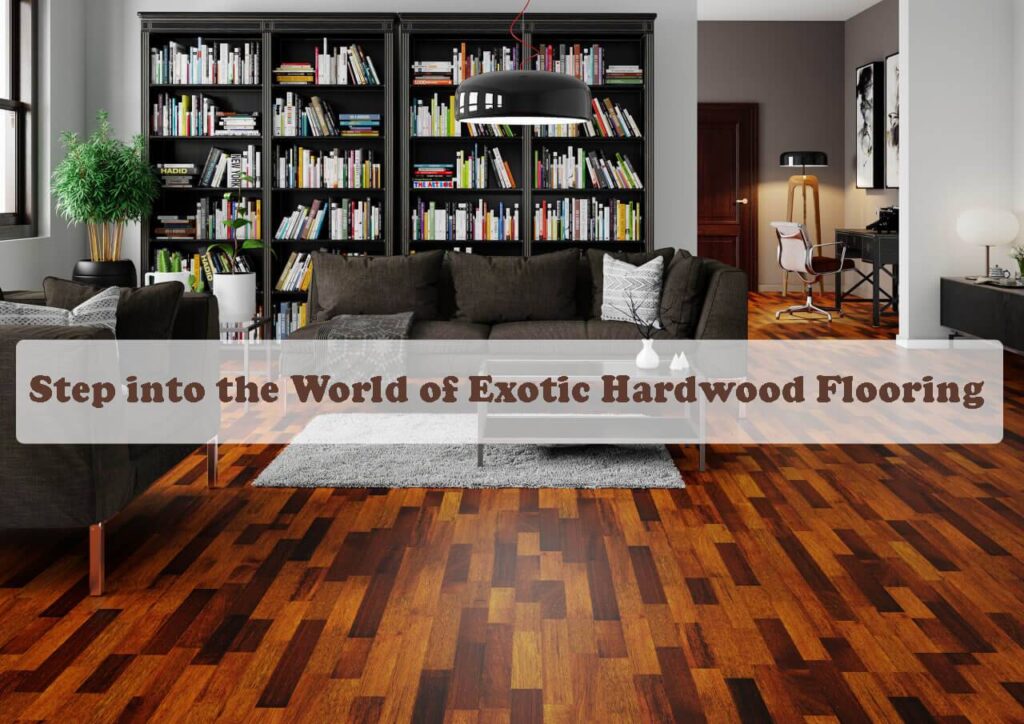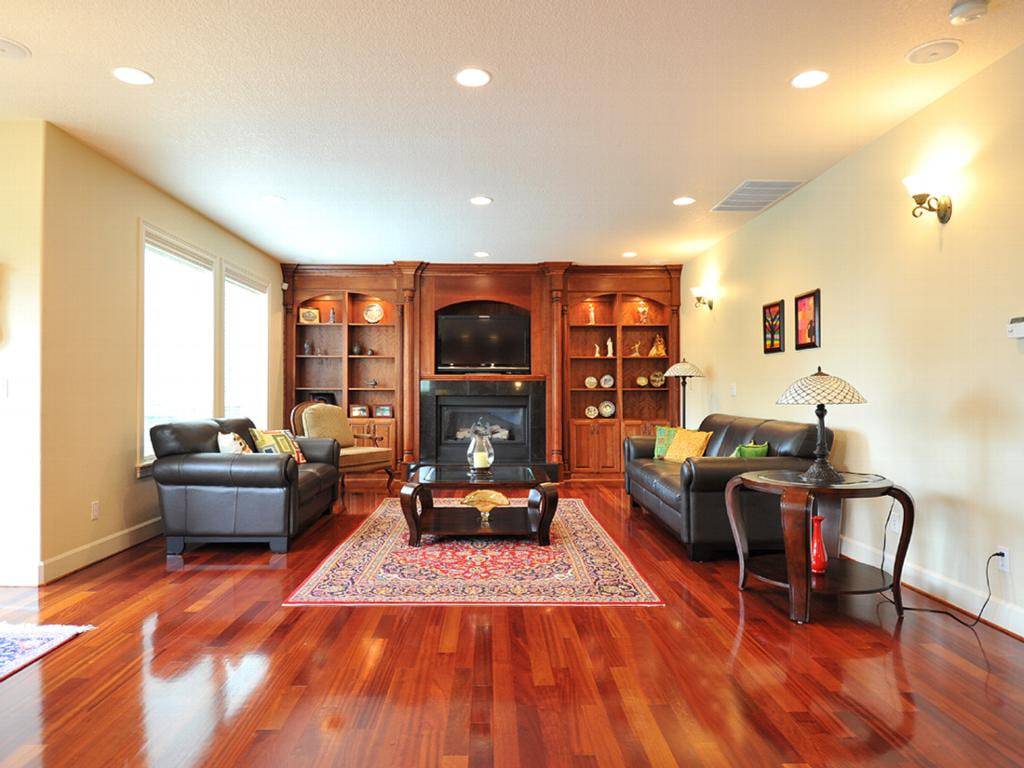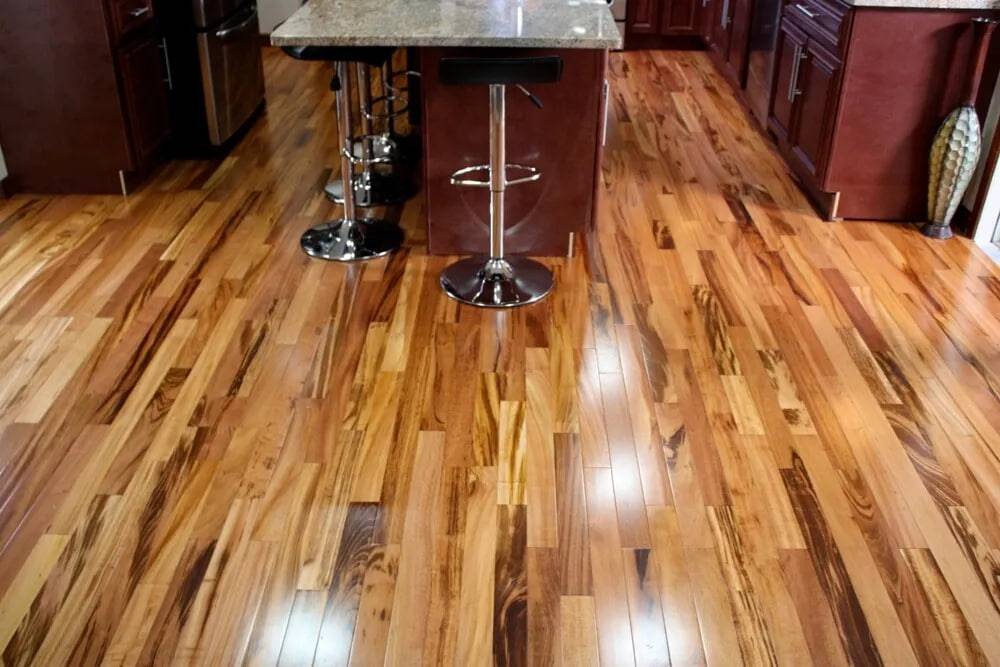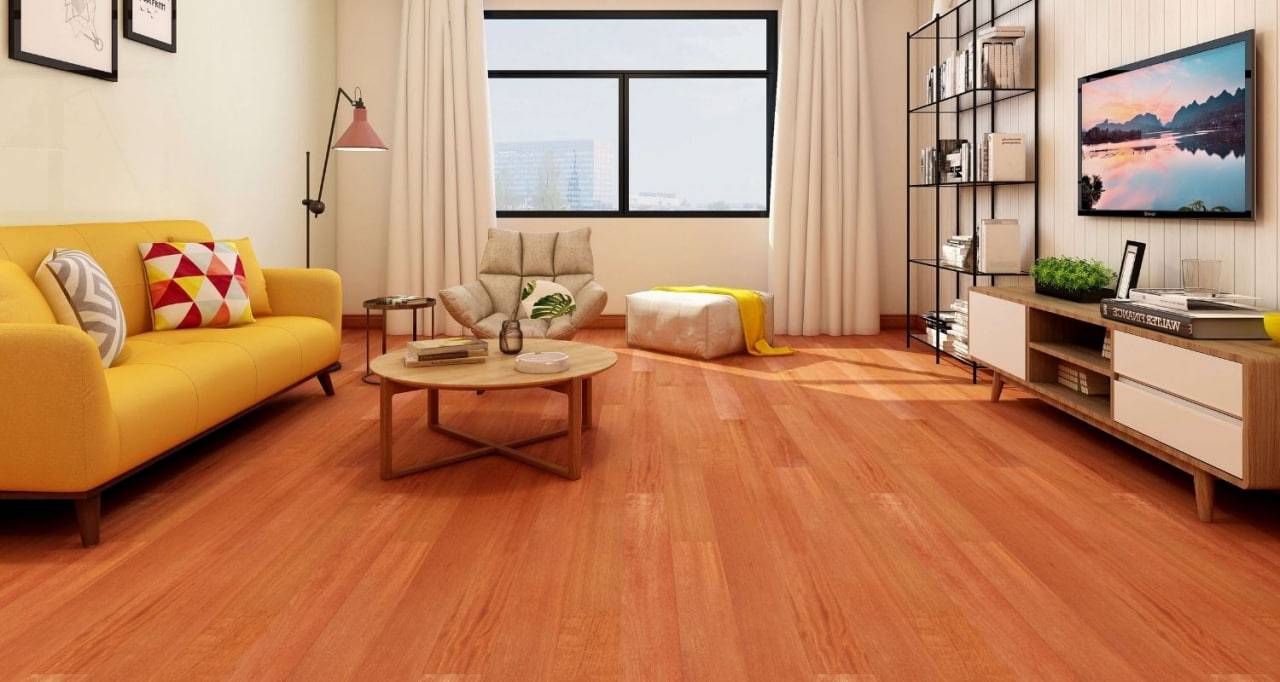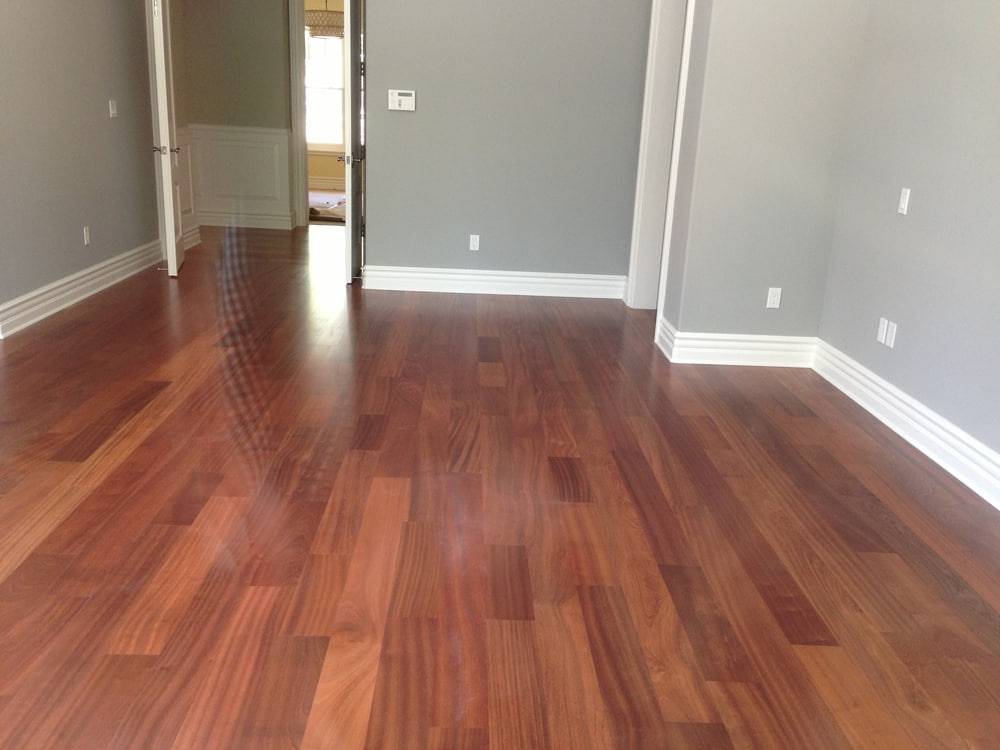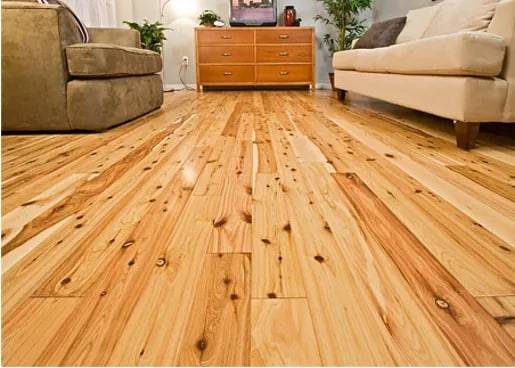Forget predictable browns and tame grains. Step into a world where floors ignite your senses: rich, vibrant colors, captivating patterns whispering tales of distant forests, and a touch of the unknown with every step. That’s the magic of exotic hardwood flooring, a universe beyond the ordinary.
Here, foreign woods shed their secrets, each plank a unique story waiting to be discovered. Join me on an exploration of this remarkable diversity, a journey to unveil the “exotic” and discover why it might just be the perfect fit for your home.
So, buckle up and prepare to be swept away by the beauty and intrigue of exotic hardwood flooring. Are you ready to embark on this extraordinary adventure?
Beyond Borders: Unveiling the True Meaning of Exotic Hardwood Flooring
Forget geographical labels – exotic hardwood flooring isn’t just about where it comes from. While North American definitions might restrict it to wood outside the US and Canada, it’s time to look deeper. Imagine rich grains whispering tales of distant forests, colors that dance beyond familiar browns, and a unique character that elevates your home beyond the ordinary. That’s the true essence of exotic hardwood.
Not just a name, a statement
True, hardness often plays a role. While some “exotics” like purpleheart and Australian cypress may score mid-range, most boast impressive Janka ratings, like the legendary durability of teak, mahogany, ipe, and jatoba. But hardness is just one chapter in the story.
A spectacle for your eyes
Sweep aside expectations of muted browns. Embrace wide, captivating grains that tell their own stories. Let bold colors like vibrant reds and even surprising purples paint a masterpiece on your floor. Imagine Brazilian pecan’s dramatic shift from deepest black to light tan, all within a single plank.
A commitment to beauty
Yes, the journey from distant lands comes at a premium. Importing these marvels adds to the cost, but remember, you’re not just buying wood, you’re investing in an unforgettable statement piece. It’s a conversation starter, a touch of the extraordinary woven into the very fabric of your home.
So, step beyond geographical limitations and explore the true heart of exotic hardwood flooring. It’s a world of untamed beauty, unparalleled durability, and a touch of the unknown, waiting to be discovered.
Brazilian Cherry: Fiery Beauty with a Story
Brazilian Cherry, also known as Jatoba, ignites the senses with its rich, reddish hues. Its fiery spirit isn’t limited to Brazil, though, as it also thrives in the jungles of Peru and Mexico. While its peak popularity may have passed since the early 2000s, its timeless beauty and impressive characteristics offer compelling reasons to consider it for your home.
Pros:
- Built to Last: With a Janka hardness of 2350, Brazilian Cherry stands tall against wear and tear. It readily withstands sanding and refinishing, ensuring a lifetime of vibrant flooring.
- Sustainable Choices Available: Be an eco-conscious homeowner by seeking FSC-certified Brazilian Cherry. This ensures responsible forest management, protecting our precious ecosystems.
Cons:
- Not Trend-Leading: Its peak popularity may have passed, but for some, that might be a bonus! However, if following trends is key, other options might fit your style better.
- Water Stains Require Vigilance: Compared to other hardwoods, Brazilian Cherry can be more susceptible to showing water marks. Prompt attention and proper care are essential.
Tigerwood: Stripes of Drama, Whispers of Concern
Tigerwood lives up to its name, boldly declaring its presence with wide, contrasting stripes that evoke tigers, zebras, and the untamed beauty of the wild. It’s a statement piece, adding drama and personality to any room.
Pros:
- Eye-Catching Appeal: Tigerwood’s captivating stripes turn heads and create a unique ambiance. It’s not just visually stunning, it’s also a conversation starter.
- Moisture Resistant: Unlike many other hardwoods, Tigerwood boasts good resistance to moisture, making it a potential contender for kitchens and bathrooms, with proper care.
Cons:
- Fading Concerns: Unfortunately, sunlight can be its nemesis, gradually fading the darker stripes and diminishing the dramatic contrast that initially draws you in. Strategic placement and window treatments are crucial.
- Sustainability Questions: This majestic wood comes with ethical considerations. Harvesting practices vary widely, with some raising concerns about deforestation.
Kempas: Quiet Strength with Ethical Questions
Kempas, hailing from the lush forests of Indonesia and Malaysia, isn’t about flamboyant statements. Its reddish-pinkish brown hue, subtly darkening with age, exudes a calming warmth that lets other design elements take center stage. This understated beauty comes with both advantages and ethical considerations.
Pros:
- Durability at a Value: Kempas boasts impressive strength and stands the test of time, making it a cost-effective choice for long-lasting floors. With proper care, it thrives under daily wear and tear.
- A Serene Backdrop: Unlike its flashier counterparts, Kempas allows other design elements to shine. Its consistent color creates a tranquil foundation, complementing various styles.
Cons:
- Sun Sensitivity: Sunlight acts as a gradual artist, painting darker hues onto Kempas over time. Strategic placement and sun protection are crucial to maintain its initial color uniformity.
- Sustainability Concerns: Large-scale illegal logging casts a shadow over Kempas trade. Responsible consumers must be vigilant, seeking FSC certification and verifiable sources from sustainably managed forests.
Sapele Mahogany: Wavy Beauty with a Conservation Note
Sapele mahogany, with its captivating wavy grain and rich warmth, whispers of tropical elegance. This mid-range hardwood (Janka hardness 1,410) hails from the lush forests of Africa, offering both aesthetic appeal and ethical considerations.
Pros:
- Visually Striking: Sapele’s signature wavy pattern exudes a luxurious character, making it ideal for homeowners seeking a unique and upscale look for their floors.
- Sustainable Alternative: Compared to endangered mahogany species, Sapele emerges as a responsible choice, provided it carries FSC certification verifying sustainable harvesting practices.
Cons:
- Sunlight Sensitivity: Be mindful of direct sunlight, as Sapele can develop visible outlines where furniture once stood. Strategic placement and protective measures are essential.
- Moderate Hardness: While more durable than some mahogany varieties, Sapele is softer than other tropical hardwoods. Consider your traffic patterns and desired durability when making your decision.
Australian Cypress: Rustic Charm from Sustainable Shores
Australian Cypress, with its captivating whorls and pronounced grain, whispers of cozy cabins and rustic retreats. This cost-effective imported hardwood offers both aesthetic charm and environmental peace of mind.
Pros:
- Rustic Appeal: Immerse your home in a warm, natural ambiance. Australian Cypress’ unique texture and character create a charming atmosphere reminiscent of cottages and cabins.
- Sustainable Choice: Breathe easy knowing you’re making a responsible choice. This “species of least concern” is primarily sourced from sustainably managed second-growth forests in Australia, exceeding 90% of harvesting practices.
Cons:
- Moderate Hardness: Consider your furry friends! While a beautiful option, Australian Cypress falls on the softer side of the hardwood spectrum, making it less suitable for high-traffic areas or homes with active pets.
Ipe (Brazilian Walnut): Ironwood Strength, Sustainable Concerns
Ipe, also known as Brazilian Walnut, isn’t just a name – it’s a testament to its unmatched strength. With a Janka hardness of 3,680 (compared to tigerwood’s 2,160 and Douglas fir’s mere 620), this wood stands as one of the toughest flooring options available. Its resilience even earned it a spot in outdoor decks, facing the harshest elements nature throws its way.
Pros:
- Unmatched Durability: Rest assured, Ipe can handle almost anything you throw at it. Its incredible hardness guarantees a floor that endures generations, making it a worthy investment.
Cons:
- Installation Challenges: Its very strength poses a hurdle. Fabricating and installing Ipe requires specialized skills and tools, which might deter some floor installers. Be prepared for potentially limited installation options.
- Sustainability Questions: While once praised for its availability from FSC-certified sources, recent high demand has raised concerns about its sustainable harvesting.
FAQs about Exotic Hardwood Flooring:
What exactly is “exotic hardwood flooring?”
Exotic hardwood flooring generally refers to hardwoods sourced from outside of North America and Europe. These woods often boast unique colors, grains, and characteristics compared to familiar options like oak and maple.
Is exotic hardwood flooring more expensive than traditional hardwood flooring?
Generally, yes. The cost of importing these woods and their inherent rarity contribute to a higher price tag. However, the durability and unique beauty of these floors can be seen as an investment for some homeowners.
Are exotic hardwoods sustainable?
Sustainability varies greatly depending on the specific wood species and harvesting practices. Look for FSC certification to ensure your chosen wood comes from responsibly managed forests.
Is Brazilian Cherry flooring still popular?
While its peak popularity may have passed, Brazilian Cherry remains a beautiful and durable choice. Consider its timeless aesthetics and readily available FSC-certified options.
Is Tigerwood flooring high-maintenance?
Yes, Tigerwood’s dramatic stripes can fade in sunlight. Strategic placement and window treatments are crucial. Additionally, be mindful of its sustainability concerns and choose FSC-certified sources.
Is Kempas flooring a good choice for high-traffic areas?
Despite its affordability and durability, Kempas is softer than some other exotic hardwoods. Consider your traffic patterns and pet activity before choosing this option. Remember to also be vigilant about its sustainable sourcing.
Is Sapele mahogany an eco-friendly alternative?
Compared to endangered mahogany species, Sapele emerges as a more responsible choice, provided it carries FSC certification. However, be mindful of its sunlight sensitivity and moderate hardness.
Is Australian Cypress flooring suitable for rustic cabins?
Absolutely! Australian Cypress’s charming texture and sustainable sourcing make it a perfect choice for creating a cozy, cabin-like atmosphere. Just remember its softer nature when considering pet activity and wear-and-tear.
Is Ipe flooring worth the installation challenges?
If you prioritize unmatched durability and are willing to navigate potential installation limitations, Ipe’s incredible strength and longevity can be a worthwhile investment. However, ensure you choose FSC-certified sources due to recent sustainability concerns.

